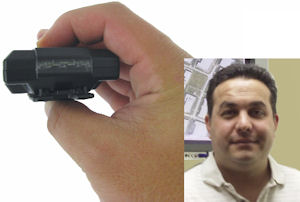CEO George Karonis of Valencia-based GPS manufacturer LiveViewGPS, said that in his 15 years as a law enforcement officer, he often saw elderly Alzheimer’s patients who had wandered away from home. LiveView is one of several manufacturers making portable GPS devices to meet the needs of the elderly Alzheimer’s patient, along with manufacturers ZTE, Sendum and CalAmp. With the baby boomer generation aging, the Alzheimer’s Association projects the aging Alzheimer’s affected population to continue growing from 5.3 million Americans to as many as 16 million older Americans by 2050. Two GPS tracking services, one private and for consumers, and one publicly funded through the states, have been created to meet the needs of the growing older adult population with Alzheimer’s. The ComfortZone service, a consumer GPS tracking service through a partnership with the Alzheimer’s Association for local law enforcement and community support networks, is proactive and allows those with dementia to retain their independence. It alerts family members if dementia patients wander out of a certain perimeter. The state-initiated Silver Alerts, currently in 24 states, are designed to track elderly after they have gone missing and can lead to stories published in the media to help locate missing Alzheimer’s patients, according to Erin Heintz, spokesperson for Alzheimer’s Association. Heintz said the SilverAlert and ComfortZone programs can work together to help Alzheimer’s patients and family members. SilverAlerts are not in effect as of yet in California. The Alzheimer’s Association is working with local law enforcement in training the officers to work with Alzheimer’s patients who have wandered off, according to Heintz. ComfortZone’s service has an exclusive agreement with service provider OmniLink based in Georgia. ComfortZone Service packages range from about $43 to $45 monthly similar to most cell phone services. ComfortZone users can track their family member themselves or call the Help Line. Also, for a fee they can have updates sent to their cell phones via text message. The Omnilink service gets relative location based on local cell phone towers. Originally for teens Location Management Devices, or personal GPS systems to track humans, originated in 2006 with devices to find teens, according to LiveView. “These GPS devices will help older adults feel like they are independent and they are not being held in their homes,” ComfortZone Help Line Specialist Mary Ellen Brooks said. “It will allow people to stay home longer. . . It also might allow people to stay at home longer before [being put in a long-term care facility].” Brooks has worked for the helpline since August and said she has seen a steady number of calls since the beginning, although not all of the calls are tracking related. One of Karonis’ portable GPS devices that was released in early 2009, the Live Trac PT-10, is the size of a beeper and is intended to be attached to a belt, put in a car on a purse and uses GPS technology to give latitude and longitude updates every 30 minutes. It retails for $550, with a current sale price of $399 and a $39.95 monthly plan. The PT-8100 is small enough to fit on a key chain and uses Ping technology similar to submarine Sonar to send out a signal, which bounces back to the device. It sells for $339, has a $25 activation fee and the cost is $24.95 monthly. According to Karonis, his devices are already being used in New York and in the Midwest in conjunction with the SilverAlerts system. His company sells the hardware, the device and issues a password to the family member so they can track their elderly relative. Karonis says his product might not be for late stage Alzheimer’s patients who are resistant to using the devices, but is more designed for the early-stage patient. Some of the advantages of the LiveViewGPS portable GPS device are that the locations are stored to memory. Karonis said if he had someone in the dementia risk group he would give them one of these monitoring devices. A disadvantage of the devices is their inability to be used in water. “This shows you that person will be OK,” Karonis said. “It gives you peace of mind and a level of comfort.” Insurance covering these devices was discussed at the beginning of their release, according to Karonis. However, he said “since this technology is so new it could take years for the insurance companies to cover it.”
